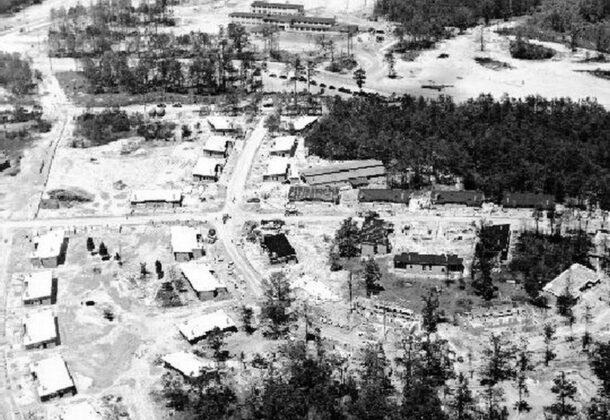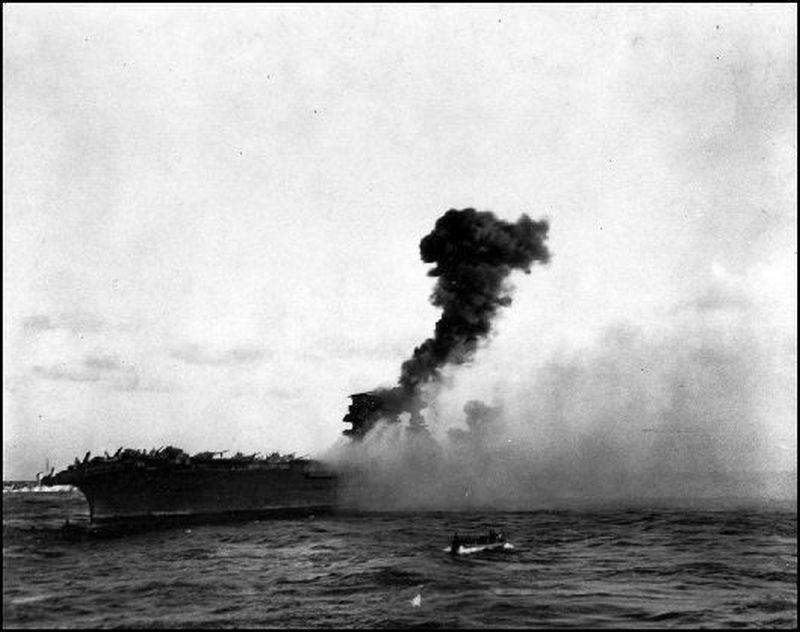Entwined Histories of Lex Park & Lady Lex

St. Mary’s County Historical Society has published Chronicles of St. Mary’s since 1953, an unrivaled trove of diligent local historians’ work, eclectic in subject and style. The Historical Society presents excerpts from a few as an invitation to explore more of our history, the shared and the unknown. A digitized record of the Chronicles is available through the member’s portal on the website and on-site research is available to all.
By Jason Babcock of the St. Mary’s County Historical Society; excerpt from Chronicles of St. Mary’s, Summer 2018 (these excerpts have been edited by the publisher).
Lexington Park began as a single housing project, built in 1943 at the corner of Great Mills Road and Three Notch Road. It was the first modern subdivision built in St. Mary’s County, serving the personnel who came to work at the new Naval Air Station Patuxent River.
As the area grew, it took the name of the new neighborhood, and the Lexington Park Post Office was established in 1947.
The Lexington Park neighborhood is now gone. It is now open space. Only its old roads and a single building remain to commemorate the homes that were built and occupied there.
The Lexington Park housing project and the community that came afterward was named after an American aircraft carrier that was sunk during World War II. For more than 75 years, it remained lost at the bottom of the Coral Sea in the South Pacific Ocean, until this year [2018] when a billionaire found the USS Lexington two miles below the water’s surface.
Several streets in Lexington Park were also named for landmarks in the early battles of World War II, such as Tulagi Place and Coral Drive.
A 1940s newcomers guide to St. Mary’s County explained, “Lexington Park, the largest of the nearby ‘Federal Public Housing Authority’ housing areas for civilian workers, was named for the Lexington, the Navy’s first really big aircraft carrier. Long before the war, it was the performance of the Lexington in maneuvers which helped to prove the value of carriers, and developed many of the techniques which have made the US Navy supreme in this type of warfare. ….
“The Lexington played a glorious part in routing the Japanese forces during the darkest days of the War. The streets of the Park are named in memory of the far-off places where she fought,” the guide said.
“The ‘QUEEN OF THE FLAT-TOPS’ went down by torpedoes and fire in the Battle of the Coral sea where the Japanese were turned back from Port Moresby and Australia.”….

USS Lexington: More than 2,700 sailors abandoned the USS Lexington on May 8, 1942, after the vessel was crippled in the Battle of the Coral Sea. Lexington Park was named after the carrier.
While the name of the neighborhood was once Lexington Park and then Lexington Manor, its nickname continued to be the Flattops throughout its existence.
“A flattop is Navy slang for an aircraft carrier,” the Maryland Historical Trust wrote. “This name results from the fact that the area is named after an aircraft carrier and because the houses have flat roofs. Also, these roofs supposedly resemble the flat deck of an aircraft carrier from the sky. Some current residents consider the appellation to be pejorative.” ….
On March 4, 2018, the USS Lexington was found at the bottom of the Coral Sea by researchers led by billionaire Paul Allen, co-founder of Microsoft.
The Battle of the Coral Sea between the United States and Japan took place between May 4 and 8, 1942. “This was the first carrier versus carrier battle in history and was the first time Japanese forces suffered a permanent setback in its advances on New Guinea and Australia,” according to Allen’s website. “However, the US lost the Lexington and 216 of its distinguished crew.”
The ship was nicknamed “Lady Lex.”
USS Lexington: More than 2,700 sailors abandoned the USS Lexington on May 8, 1942, after the vessel was crippled in the Battle of the Coral Sea. Lexington Park was named after the carrier.
After being hit by several torpedoes and bombs on May 8, the Lexington was crippled by a secondary explosion. The call was made to abandon ship and the USS Phelps actually sank the Lexington, “the first American aircraft carrier casualty in history,” according to Allen’s site. “With other US ships standing by, 2,770 crewmen and officers were rescued, including the captain and his dog Wags, the ship’s ever-present mascot.”
More than a month later, on June 13, 1942, The Washington Post recounted the details of the Battle of the Coral Sea and the loss of the USS Lexington.
Navy officials intentionally withheld the news of the sinking to further confuse the Japanese. “Japan was left in doubt about the fate of the Lexington and had to take it into consideration in planning further moves in the southwest and mid-Pacific,” the newspaper reported.
The Navy said then, “The attacks on Salamaua and Lae and the Battle of the Coral Sea resulted in the disruption of two Japanese attempts to advance to the southeastward of New Guinea and cost them a total of more than 15 ships sunk.”
Before World War II, the Lexington was already a famous vessel. Launched in 1928, the ship sent out planes in 1937 looking for Amelia Earhart, the female aviator who was lost in the Pacific Ocean.
The Japanese and Germans broadcast that the Lexington was sunk in December 1941, and broadcast it on two more occasions in January 1942, according to The Associated Press in June 1942.
The whole story is available in The Chronicles available through St. Mary’s County Historical Society, which curates a repository of a unique collection of Maryland memorabilia and museum pieces displayed on the first floor of Tudor Hall and in the Old Jail Museum at 41625 Courthouse Drive in historic Leonardtown. The 18th-century Tudor Hall also serves as headquarters of the society and houses the Historical Society’s Research Center.
While much of the property and programming remains shuttered during the COVID-19 pandemic, much of the materials available through the Historical Society are digitized and accessible. To learn more visit their website linked above.
To find more posts by the St. Mary’s Historical Society, visit this Leader member page.























